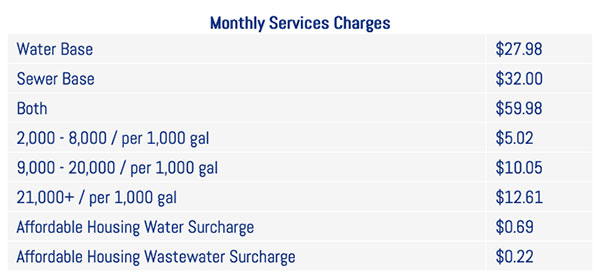Inclusionary housing programs set requirements for how long the set-aside units must remain affordable. Most programs mandate affordability for 30 years or longer…
— from a discussion about ‘inclusionary housing’ written by Stephanie Reyes and Ruoniu Wang, on Shelterforce.org, March 10, 2021.
‘Inclusion’, as an idea, bounced around inside and outside the conversation in various ways, at the July 29 joint work session between the Pagosa Springs Town Council, the Town Planning Commission, and the Pagosa Springs Area Tourism Board, held at Town Hall.
That is to say, three particular boards concerned about the use of the annual $1 million in Lodgers Tax revenues were ‘included’ in the conversation. There are certainly other groups concerned about this same issue, who were not seated at the table, so we can’t say the work session was fully “inclusionary”.
And as noted in Part One, Mayor pro tem Maddie Bergon started the work session off by telling the meeting participants to avoid any discussion of “funding” — including the Lodgers Tax question — which, I assume, was the primary topic the Tourism Board had showed up to talk about.
So, in that sense, as well, we can’t say the work session was fully “inclusionary” in terms of the allowable topics of conversation.
But the discussion did include some talk about “Inclusionary Housing.”
Here we are hearing consultant Jennifer Gardner, of Fort Collins-based firm LoganSimpson, introducing the evening’s topic: how should the Town’s Land Use and Development Code be revised, to address the housing crisis?
“We always like to kind of go back to what we’ve heard throughout the process. So, from our ‘stakeholder feedback’, our questionnaires, conversations with you all, different boards, and from the [2018] Comprehensive Plan, we’ve heard that attainable housing is very important to the residents and is currently in short supply.
“I would say, of all the communities we’re working in, your housing situation is the most dire that I’ve seen in a long time. So we’ve been working very hard to put forward some research about what communities are doing successfully, and think through some tools that might help Pagosa Springs have a better housing situation. So, providing a variety of housing options is key, and is important for retaining the community’s character. And then Short-Term Rentals, as you all know, have kind of taken a front seat in the conversation… and have sort of taken over, some of those internal opportunities…”
“So thinking through all of those different options, that’s kind of our guidance, that we’ve heard so far from the community throughout this process.
“National best practices. So incorporating incentives, and developing inclusionary zoning, are two tools that communities are using to tackle the housing affordability issue. Providing a variety of housing types, from tiny homes to townhomes to multi-unit conversions — we will go into those a little bit later — and using ADUs [Accessory Dwelling Units] as a tool as well.”
Including, that is to say, the Carrot, and the Stick.
Housing incentives are a type of Carrot. Perhaps not the same kind of carrot as implied by artist Boardman Robinson in 1916, but a Carrot nevertheless…
Three local governments have rolled out Carrots, over the past couple of years, in hopes of supporting and subsidizing workforce and low-income housing.
Pagosa Area Water and Sanitation District (PAWSD) has established a fund, courtesy of their relatively-new water and wastewater surcharges, that allows the Board of Directors to distribute Carrots (subsidies) to folks who are creating affordable housing solutions. As far as I know, all PAWSD customers are contributing to this fund on a monthly basis, and as far as I know, the PAWSD Board has thus far waived water hook-up fees for two workforce housing projects in downtown Pagosa.
The Archuleta Board of County Commissioners have agreed to reimburse property taxes to one Lewis Street housing project, so long as the rental units are occupied by people working in Archuleta County or at the Wolf Creek Ski Area. The BOCC also leased 2.5 acres of County-owned property on Hot Springs Boulevard, to the Archuleta County Housing Authority, to accommodate a 34-unit Low Income Housing Tax Credit (LIHTC) project now under construction.
The Town government likewise supported the Lewis Street housing project with a waiver of fees, and the LIHTC project, also with a waiver of fees.
But while we are watching maybe 40 units of ‘affordable’ housing get built, at least 20 times as many houses — an estimated 800 homes in Archuleta County — have been converted into STRs. Short-Term Rentals. Vacation rentals.
As a community, we have been bending over backwards to provide comfortable, safe housing for tourists.
As a community, we have done very little to provide comfortable, safe housing for the individuals and families who work here.
So then, what about the Stick? If the Carrot is not able to encourage enough housing to meet the local demand… Maybe we need to bring out the Stick?
Consultant Jennifer Gardner mentioned ‘inclusionary housing’. Put into simple terms, ‘inclusionary housing’ means that a developer, wishing to build something in Pagosa Springs, is required to provide some workforce housing. How much? There’s no magic number. Every community that implements inclusionary regulations has to decide ‘how much’ housing is appropriate.
Here’s a quote from Shelterforce.org:
Grounded Solutions identified a total of 1,019 inclusionary programs in 734 jurisdictions in the study, from large cities like Seattle to small towns like Park City, Utah. While programs exist in housing markets as varied as New York City, Austin, Atlanta, and Detroit, inclusionary housing tends to produce the most units in places that have mid-to-high levels of development activity and relatively high housing costs. Communities should pursue inclusionary housing if they currently have a lot of development, or anticipate significant development in the coming years, and they want to ensure future development is inclusive…
While inclusionary housing is only one tool in the toolbox, it’s an important one. Most inclusionary housing programs require homes to remain affordable for at least 30 years, meaning that even if the program produces a relatively small number of units each year, the total stock of affordable homes grows over time.
Nationwide, 258 inclusionary housing programs reported creating about 110,000 affordable homes…
But that’s not the whole story. The ‘inclusionary housing’ news is not always good.
It all depends on who’s telling the story, from which biased point of view.



